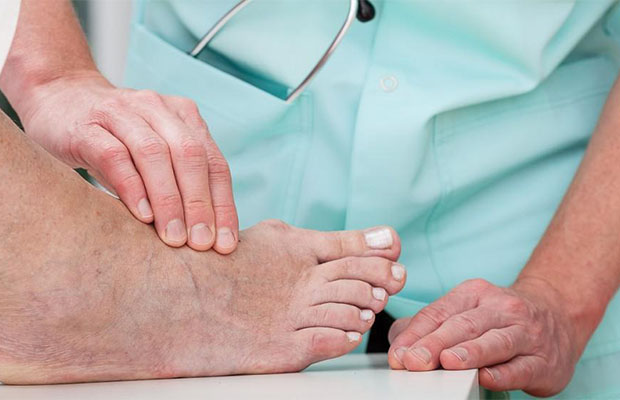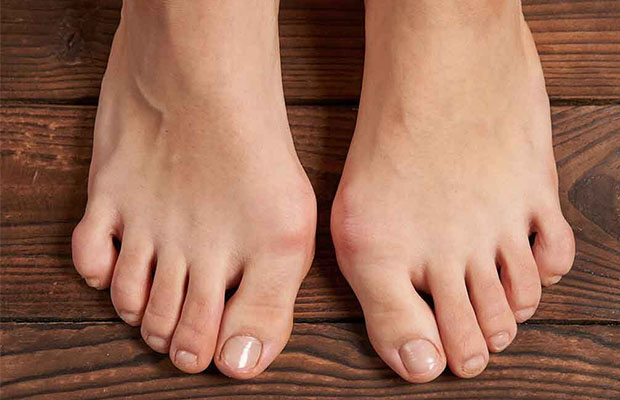What Is The Bunion Surgery Recovery Time? Things You Should Know

Your feet are among your most valuable possessions. Consequently, deciding whether to operate on them is challenging.
Call your doctor for treatment if you have bunions that hurt your big toe. What is the bunion surgery recovery time?
You will typically have your stitches removed about two weeks after surgery. Your bones will heal, though, but it will take six to twelve weeks. Wearing a boot or shoe for protection is probably required.
This care sheet gives you a general idea of how long it will take you to recover.
You may also like:
Table of Contents
Do You Have A Bunion?
You may have a bunion if the main big toe joint on the inside of your foot has an angular, bony bump that is frequently covered by calluses. Because they can be more annoying than painful, bunions frequently go untreated until they are too severe. However, if untreated, it might result in more involved surgery and additional foot issues.
People are often surprised when they experience discomfort from bunions because of their slow growth. Before it worsens and becomes a serious issue, you should see a doctor if there is swelling and tenderness at the base of the toe.
From mild to severe deformities, bunions can vary. Bunions may develop for a number of reasons. They may result from worn-out shoes or be an inherited condition. However, no over-the-counter remedy has ever “cured” them.
Surgery is usually necessary for bunions. Traditional open surgery and minimally invasive surgery are the two primary approaches used to treat bunions. Each consists of various steps.
What Is A Bunion Surgery?
A treatment to address bunions is bunion surgery, also known as a bunionectomy. Various bunion surgery procedures exist. For pain relief and improved function, the big toe is typically realigned.
3 Types Of Bunion Surgery
Your surgeon may use a few different techniques during your bunion surgery, including:
- Exostectomy: The bunion is removed by your surgeon during this procedure. For the toe to be repositioned, doctors frequently combine this method with osteotomy. Only the smallest bunions are treated with this procedure infrequently.
- Osteotomy: A few small incisions are made in the bones by your surgeon. The surgeon will then realign the joint in your big toe using screws or pins. The most frequent treatment for bunions is this one.
- Arthrodesis: Inflamed arthritis can occasionally cause bunions. Your surgeon will cut away any arthritic big toe joint components during arthrodesis joint fusion. To hold the bones together while they heal, your surgeon will then insert screws into the toe. Only the worst bunions require this surgery.

Who Should Have A Bunion Surgery?
Surgery is typically only necessary if your bunion is hurting or interfering with your daily activities. You may be a candidate for bunion removal if you have:
- large toe that moves in the direction of the smaller toes.
- Hallux rigidus, also known as a stiff big toe.
- that prevents you from going about your daily business.
- persistent swelling and inflammation in the big toe.
What Will Happen Before Bunion Surgery?
Your health, activity level, and any other factors that might affect your recovery will be discussed with your surgeon prior to surgery. These details will be used by your surgeon to determine the best kind of surgery for you. Your doctor will ask you to arrive one to two hours early on the day of your appointment. As well as a light monitored anesthesia to keep you comfortable throughout the procedure, surgeons frequently perform bunion surgery with local anesthesia (a numbing agent around the toe). For this kind of procedure, a breathing tube and strong anesthesia are typically not required.
What Will Happen During Bunion Surgery?
A small incision is made along the big toe joint for the majority of bunion surgeries. Then your surgeon realigns your big toe. The tendons or ligaments around your toe joint may also need to be realigned by your surgeon.
Usually, your surgeon sets your toe in place using:
- Metal plates.
- Small screws.
- Wires.
To aid in the proper healing of the wound, your surgeon will apply bandages and stitches to your toe. Depending on how bad the bunion is and what needs to be done to fix it, the entire procedure can take anywhere from 45 minutes to 3 hours.
What Will Happen After Bunion Surgery?
You can go home the same day after bunion surgery because it is an outpatient procedure. You will stay in a recovery room following surgery for one to two hours until your doctor deems you fit to leave. To get a ride home, you will need to ask someone. During your recovery at home, your healthcare provider will instruct you to:
- Do not put any weight on your big toe.
- If your foot is swollen, elevate it.
- Keep your wound and bandages dry.
- Use painkillers as directed by your doctor. (In environments other than an operating room, antibiotics would hardly ever be necessary for this kind of surgery.)
It’s possible that you’ll need assistance with household tasks or meal preparation for the first two weeks following surgery.
Complications Of Traditional Foot Surgery
- Poor Circulation: It takes a long time for blood to reach the foot because it is located the farthest from the heart. Circulation problems and infections may result from this.
- Elevation Drawbacks: In order for the patient’s foot to heal after traditional bunion surgery, they must elevate it. This decreases the blood flow to the foot even more…
- Higher Stress: Your foot will find it harder to heal as time goes on. It experiences the most stress because it is the most frequently used part of your body. Patients often break stitches and re-injure their feet from trying to
move around. - Slower Healing: Traditional bunion surgery can have a painful recovery process. The healing process as a whole could take up to six months to complete, but the recovery itself could take up to six weeks. Patients are required to wear a cast for two weeks before going back to have their sutures removed.
Traditional open-foot surgery frequently results in wound healing problems. Bunions are intended to be treated using a method that heals quickly and causes the least amount of discomfort possible. a much less intrusive one.
Advantages And Risks Of Bunion Surgery
Advantages
After having surgery for a bunion, the majority of patients report feeling significantly less pain. Additionally, big toe alignment is improved by the surgery. You may be able to walk more easily by realigning your big toe.
Risks
The possible risks associated with bunion surgery include:
- Recurrence of a bunion.
- persistent discomfort or stiffness.
- either an infection or inflammation.
- Nerve damage.
- wound-healing issues.
The risks of bunion surgery will be discussed with you by your doctor. Complications following bunion surgery are uncommon and typically manageable. Your recovery may take longer than anticipated if any complications arise.
How To Take Care Of Yourself At Home?
Activity
- When you are fatigued, take a nap. You’ll be better able to recover if you get enough sleep.
- Find out from your doctor when you can resume driving.
- Unless your doctor advises against it, you may shower. If the bandage has been removed, wash the affected area with warm water and soap and keep it dry. Pat the area dry.
- You’ll probably need to take several weeks off from work. Depending on your line of work and the extent of your surgery, you may need to take a certain amount of time off.
- Depending on the kind of surgery you had, you might have to refrain from heavy lifting for 3 to 8 weeks or longer.
- To strengthen your foot and improve movement, you might need to perform rehabilitation exercises on a regular basis. Follow your doctor’s advice and begin gradually.
Diet
- You may consume your regular diet. Try bland, low-fat foods like plain rice, grilled chicken, toast, and yogurt if your stomach is upset.
- Immediately following surgery, you might notice that your bowel movements are irregular. Try to avoid constipation and bowel movements that are difficult to move through; this is common. You might want to take a daily fiber supplement. Ask your doctor about taking a mild laxative if you haven’t had a bowel movement in a few days.
Medicines
- If and when you can resume your medication, your doctor will let you know. He or she will also provide you with guidance on how to take any new medications.
- Ask your doctor if and when you should resume taking any blood thinners you are currently taking, such as aspirin. Verify that you fully comprehend the instructions provided by your physician.
- With medications, use caution. Follow the directions on your prescription pain relievers exactly.
- Take the antibiotics as prescribed by your doctor. If you start to feel better, don’t stop taking them. The entire course of antibiotics must be taken.
- If you think your pain medicine is making you sick to your stomach:
- Unless your doctor has advised against it, take your medication after meals.
- Request a different pain reliever from your physician.
Incision Care
- Your toe will be bandaged and in the proper position when you leave the hospital. After a few days, your doctor will likely take off the bandages. The bandages might also be taken off at home at your doctor’s request. The surgical area should not be touched. Keep it dry.
- Before your doctor gives the all-clear, don’t soak your foot.
Ice And Elevation
- Apply ice or a cold pack to your foot for 10 to 20 minutes every hour to relieve pain and swelling. Put a thin piece of cloth between the ice and your skin.
- During the following three days, whenever you sit or lie down, elevate your foot and leg on a pillow. Try to keep it above the level of your heart. As a result, swelling will be lessened.
How To Prevent Bunions From Returning After Surgery?
You can take action to stop bunions from recurring after surgery. Wearing ill-fitting shoes is one of the most frequent causes of bunions. Be aware that wearing too-tight shoes again may result in bunions reoccurring.
If a pronated (flatter) foot type was the initial cause of the bunion, an orthotic may also be useful in preventing recurrence.
If equinus (tight calf muscles) caused the bunion, stretching may also be beneficial.
Final Words
The recovery process takes longer the longer you wait when you suspect a bunion. No matter which approach you use, be prepared to wear a boot after surgery. You may experience some swelling for a few weeks even after applying ice to your foot and toe.
A minimally invasive technique is the least disruptive, even though choosing surgery is always risky. For weeks, you don’t need to elevate your foot or come back for suture removal. The risks are decreased, but the recovery period is also short, allowing you to resume your normal activities the same day.
Tags: Bunion Surgery